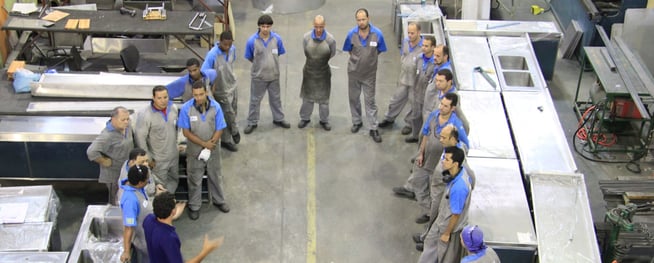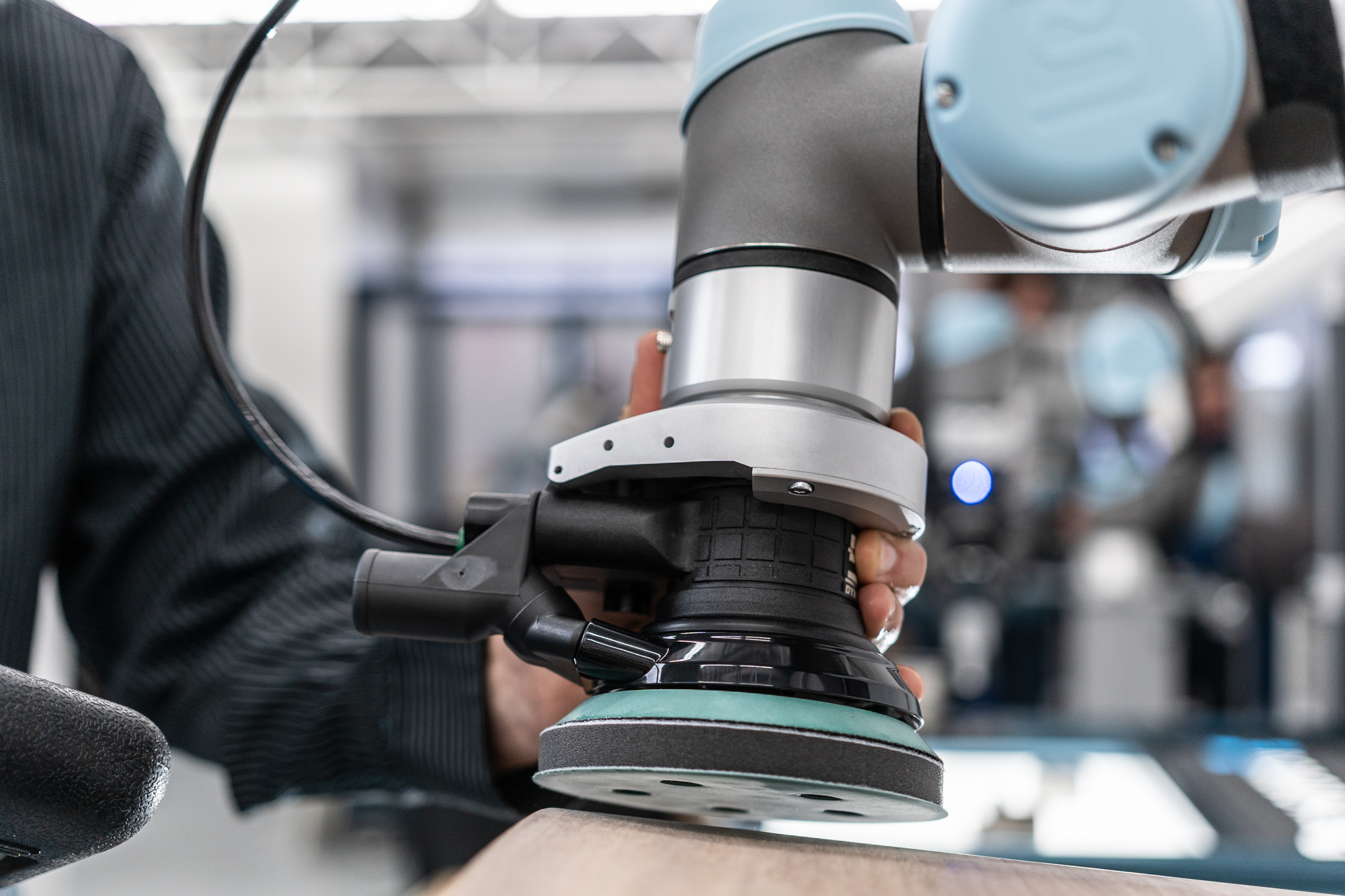Don’t Let Rumours Ruin Your Robot’s Chances of Success; Change the Conversation on the Shop Floor

Posted on Sep 08, 2016 7:00 AM. 4 min read time
As a production manager tasked with improving efficiency, you discovered that implementing a collaborative robot into your process is a viable option. You’ve been busily gathering, preparing and presenting information on competitive edge, return on investment, ease of implementation, and cost of ownership to satisfy the executive decision-makers at your company, but are you neglecting to manage the opinion on the shop floor?

A crucial part of the analysis for deciding where and how collaborative robots could be implemented includes looking at the step-by-step processes on the shop floor. You probably won’t be able to do a thorough analysis and keep your possible automation plan a secret from the people who are doing the work right now. The way you approach them can make a huge difference in how automation is perceived by your workforce. It’s important to open up communication and allow the people doing the work to contribute to the conversation and decision process early to prevent fear and rumours from taking over.
Consider this advice from the Harvard Business Review: “Selling top management on the case for new technology —without simultaneous involvement of user organizations in the decision-making process— is not enough. It is equally important for users of an innovation to develop ‘ownership’ of the technology.” That statement is from 1985, back when “new technology” was a Commodore 128, and the 1.0 version of Microsoft Windows was made available.
Technology has changed, but humans still fear it, especially in the workplace. Thirty years from now we may think of robotic automation as no scarier than using a computer at work, but for now, the fear is here and can’t be ignored. The idea of using robots in the workplace tends to bring up three main concerns: robots will cause job losses, robots aren’t safe, and robots are difficult to use. Addressing these fears early, and in a positive manner can make a huge difference in the success of the implementation.
In the Fast Company article “How to Implement Change Without Making Your Employees Hate You,” author Mark Lukens offers this advice: “Deliver important news —including news about changes ahead— with warmth and some forethought of how it will affect employees.”
Long before the purchase order is signed, let your workforce know that yes, you are looking into adding robots to some production areas, and reassure people that they will keep their jobs. Share all positive information that you can. Will you be automating any dull, dirty, or dangerous tasks? Be sure to provide the bigger picture. Is the company expanding its production capacity, or ramping up for a big contract? Make people feel as if they’re valued members of the team that’s going to achieve a big objective. What kind of new jobs will people be doing?
In the book Only Humans Need Apply: Winners and Losers in the Age of Smart Machines, the authors state: “We recommend an early declaration that no one will lose his or her job to a machine. That will immediately ease the nerves of the workforce and make it much more likely that they are open to the new virtual colleague.”
Once you’ve successfully reassured people that you’re not eliminating them, it’s important to address their safety concerns. Explain that collaborative robots are designed to work side by side with humans, and that they shut themselves off if they accidentally bump into someone. When you say “robot,” people may instantly think of big, fast, powerful industrial caged robots, and not understand that you simply mean a robotic arm. Show a video like this one about the implementation of collaborative robots or share an image to show exactly what you’re talking about to make sure they understand. Explain that ISO just issued new safety standards for collaborative robot applications, and that you’re performing a comprehensive risk analysis. For more information about ISO/TS 15066, click here.
Finally, address the issue of robots being difficult to program and manage. Since your executive decision-makers will have this same concern, you should be well-prepared to share what you’ve learned about the ease of programming a collaborative robot using path recording.
After you’ve eliminated or at least significantly reduced people’s fears about robots, they may well find something else to worry about, because that’s human nature. However; by providing information early and opening up communication you’ll make your robot implementation project a less attractive target for the worriers and rumour-mongers. Continue providing updates and answering questions to show you have nothing to hide and they have nothing to fear. When the big day arrives and you use your first collaborative robot in your production process, be sure to take a picture of everyone who was there. You’re making history! Future generations will enjoy looking back to the time when robots in the workplace were new.









Leave a comment